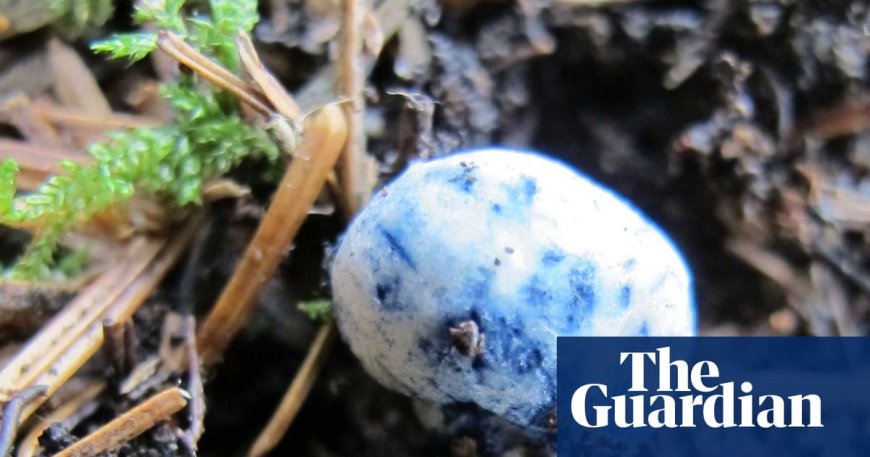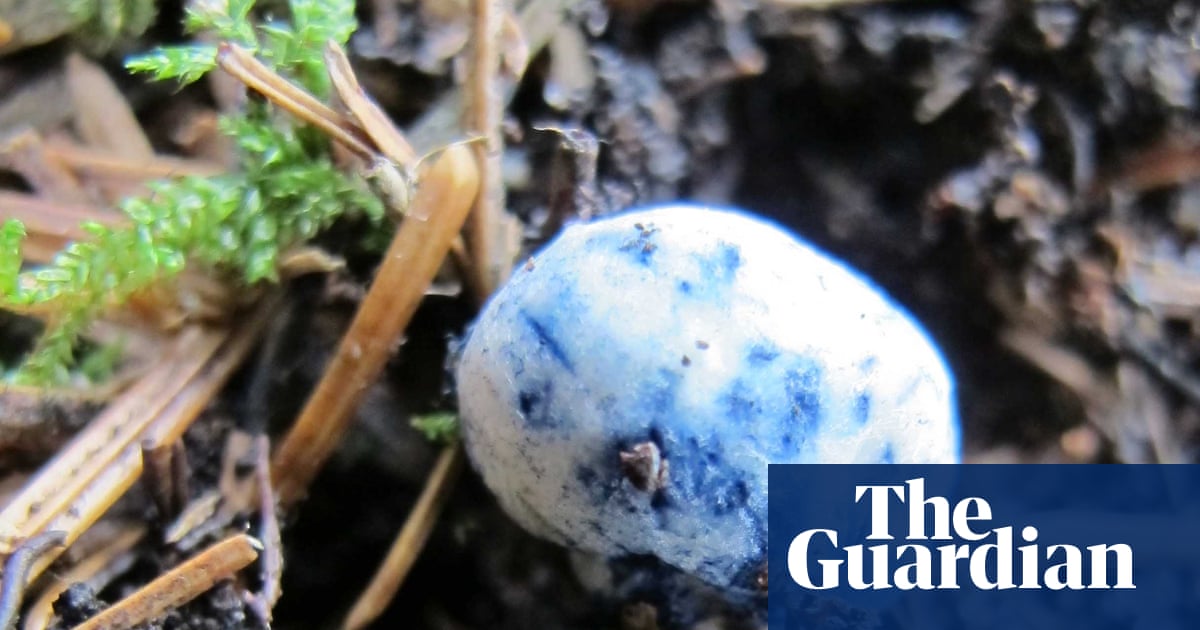Rare truffle find in Scottish spruce forest sends fungi experts on alien species hunt
Rare truffle find in Scottish spruce forest sends fungi experts on alien species hunt The Guardian

Naturalists Discover Rare Truffle in Scottish Forestry Plantation

Naturalists have discovered a very rare type of truffle living in a Scottish forestry plantation that is being cut down to make way for a natural Atlantic rainforest. This discovery highlights the importance of the Sustainable Development Goals (SDGs) in promoting biodiversity and sustainable land use.
Background
The truffle, known as Chamonixia caespitosa, is typically found in the Alps and Scandinavia. It has only been recorded once before in the UK, in north Wales, seven years ago. Inedible to humans, this truffle has a symbiotic relationship specific to the non-native Sitka spruce trees that dominate the plantation. When it ripens, its white fruit turns a mottled blue in contact with the air.
The Paradox
The work to remove the Sitka spruce trees, which are non-native and ecologically limited, is necessary to allow rewilding by native trees. However, this means that the truffle will be lost in the process. This paradox raises questions about the responsibility to protect and preserve rare species like the truffle.
Potential Distribution
The naturalists involved are puzzled about how the truffle arrived in Scotland. Fungus spores rarely travel to the UK on the wind, and the Sitka plantations in the UK were originally grown from seeds imported from Canada. Nevertheless, the discovery of the truffle has sparked a hunt by other fungus experts to see if its DNA or fully formed truffles can be found elsewhere in Scotland.
The Importance of Study
Dr Andy Taylor, a molecular fungal ecologist at the James Hutton Institute who detected the truffle, believes that further study is crucial. He argues that the rarity of the fungus globally raises the question of whether there is a responsibility to ensure its survival. By studying the truffle’s DNA, Taylor has convinced Forestry and Land Scotland, the state-owned forestry agency that owns the site, to support a project to study soil species in other plantations.
Rethinking Sitka Spruce Plantations
Sitka spruce plantations have long been criticized by conservationists for their negative impact on biodiversity. These densely packed non-native monocultures support few other species and are often considered ecologically dead. However, Taylor believes that the soils in these plantations could be richer than realized. As the only mycologist to study the species that populate Sitka forests below ground, he suggests that there may be undiscovered soil biodiversity in these old systems.
Conclusion
The discovery of the rare truffle in a Scottish forestry plantation highlights the importance of biodiversity conservation and sustainable land use. It also emphasizes the need for further research and study to better understand and protect our natural ecosystems. By aligning with the Sustainable Development Goals (SDGs), we can work towards a more sustainable and inclusive future for all.
SDGs, Targets, and Indicators
-
SDG 15: Life on Land
- Target 15.1: By 2020, ensure the conservation, restoration, and sustainable use of terrestrial and inland freshwater ecosystems and their services.
- Indicator 15.1.1: Forest area as a proportion of total land area.
The issues highlighted in the article are connected to SDG 15: Life on Land. The article discusses the removal of non-native Sitka spruce trees in a Scottish forestry plantation to allow rewilding by native trees. This action aligns with Target 15.1, which aims to ensure the conservation, restoration, and sustainable use of terrestrial ecosystems. The indicator relevant to this target is Indicator 15.1.1, which measures the forest area as a proportion of total land area.
-
SDG 13: Climate Action
- Target 13.2: Integrate climate change measures into national policies, strategies, and planning.
- Indicator 13.2.1: Number of countries that have integrated mitigation, adaptation, impact reduction, and early warning into primary, secondary, and tertiary curricula.
The article indirectly addresses SDG 13: Climate Action. The removal of non-native Sitka spruce trees and the rewilding of the Scottish forestry plantation contribute to climate action by promoting the growth of native trees, which can help mitigate climate change. This aligns with Target 13.2, which calls for the integration of climate change measures into national policies and planning. The relevant indicator is Indicator 13.2.1, which measures the number of countries that have integrated climate change measures into education curricula.
SDGs, Targets, and Indicators
| SDGs | Targets | Indicators |
|---|---|---|
| SDG 15: Life on Land | Target 15.1: By 2020, ensure the conservation, restoration, and sustainable use of terrestrial and inland freshwater ecosystems and their services. | Indicator 15.1.1: Forest area as a proportion of total land area. |
| SDG 13: Climate Action | Target 13.2: Integrate climate change measures into national policies, strategies, and planning. | Indicator 13.2.1: Number of countries that have integrated mitigation, adaptation, impact reduction, and early warning into primary, secondary, and tertiary curricula. |
Behold! This splendid article springs forth from the wellspring of knowledge, shaped by a wondrous proprietary AI technology that delved into a vast ocean of data, illuminating the path towards the Sustainable Development Goals. Remember that all rights are reserved by SDG Investors LLC, empowering us to champion progress together.
Source: theguardian.com

Join us, as fellow seekers of change, on a transformative journey at https://sdgtalks.ai/welcome, where you can become a member and actively contribute to shaping a brighter future.







